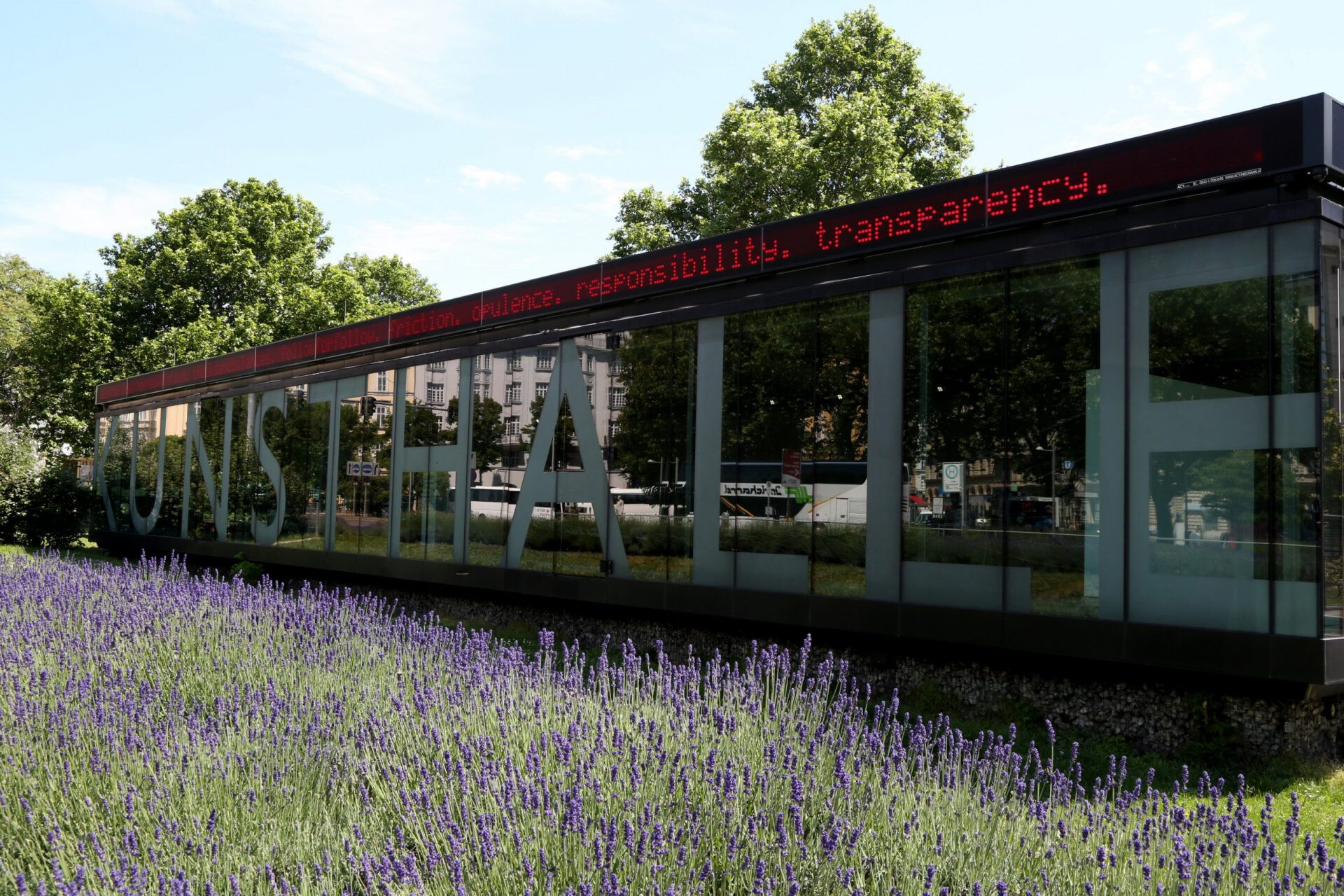History
1992
In the beginning, Kunsthalle Wien was a makeshift structure.
Founded in 1992, Kunsthalle Wien was established with a radical architecture – a yellow container – conceptualized by Austrian architect Adolf Krischanitz at Karlsplatz and comprised app. 1,000 m2 exhibition space. Conceptualised as a temporary structure, the rather controversial architecture not only shaped Vienna's cityscape, but also changed the local art and exhibition scene.
2001
In May 2001, Kunsthalle Wien eventually moved into its new headquarters, designed by the architect duo Ortner & Ortner, at the Museumsquartier.
For this space the Winterreithalle (winter riding arena) of the Hofstallungen (Imperial Mews) was extended by a functional annex which incorporates a historic building within contemporary architecture. The building comprises two exhibition halls of different sizes. It has 1,119 m2 exhibition space on the first floor and 528 m2 on the ground floor.

In 2001, the yellow container at Karlsplatz was reduced to a glass pavilion.
When Kunsthalle Wien assumed its premises in the MuseumsQuartier in 2001, the yellow container at Karlspaltz was removed, leaving 221 m2 exhibition space in a glass pavilion – also designed by Adolf Krischanitz – which continues to host its programme.
